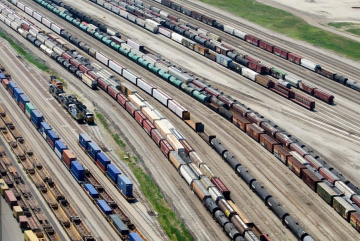

Oil Spill Response Plans (OSRPs) for Crude by Rail
Do you have any questions?
- United States
- Services
- Spill And Response Plans
- Oil Spill Response Plans (OSRPs) for Crude by Rail
Oil Spill Response Plans (OSRPs) for Crude by Rail
Antea®Group assists railroads with the development of comprehensive OSRPs, training, documentation, and record-keeping to meet the latest standards. We have extensive experience writing spill response plans for railroad yards, bulk liquid terminals, manufacturers, and many other commercial and industrial facilities nationwide. We have an expert understanding of the spill response regulations contained in 40 CFR for a variety of sites and facilities, as well as a specific understanding of the requirements for various business sectors.

